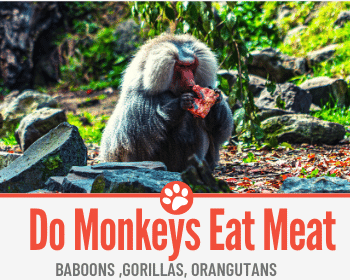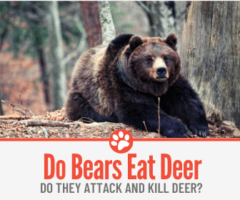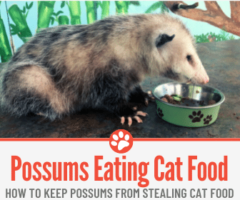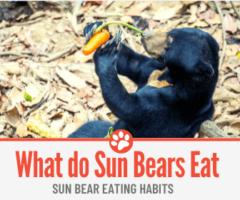 Monkeys are one of the closest relatives to humans.
Monkeys are one of the closest relatives to humans.
Monkeys share many physical features with humans, for example, their opposable thumbs and their ability to walk on two legs and so I started to wonder whether monkeys have a similar diet to humans and consider whether they eat meat?
Do Monkeys Eat Meat?
Yes, monkeys eat meat as they are omnivorous. Omnivorous creatures are animals that eat a wide selection of foods, including both meat and plant-based foods. Monkeys’ have a similar dietary composition to humans, who are also omnivores, as we eat meat, plant-based foods, fungi and algae.
Can monkeys eat meat?
Monkeys and humans have very similar teeth structure. Molars for grinding, incisors for cutting and canines for tearing meat. Even though most monkeys are mostly vegetarian, as they do occasionally eat meat, they still require canines for tearing flesh.
Questions around why monkeys’ have large canine teeth have undoubtedly arisen numerous times, particularly in respect of gorillas who are thought to have an entirely plant-based diet. Gorillas are famous for their large sharp teeth.
Gorillas don’t use these teeth for tearing and chewing meat, but they do eat a lot of bark, and heavy twigs and this, therefore, requires them to have sturdy teeth.
Their large canines are also used for intimidation, and they display these to other animals, especially other large male gorillas, to compete for dominance.
Baboons exhibit similar behaviours, in exerting their dominance in their troop. Baboons use their teeth as a visual threat when participating in aggressive fights to determine which male baboon will be the dominant one.
In short, monkeys can eat meat, even though for the majority of the time monkeys eat a plant-based diet. It will be interesting to analyse whether monkeys alter their dietary habits to a more meat-based diet as sources of plant-based foods deplete due to the destruction of forests and grasslands and over-farming.
What kind of meat do monkeys eat
The type of meat that monkeys eat is dependent on their habitat and the available food. Factors such as the hunting season and the hunting strength of the troop also play a role. For example, the hunting season in Gombe, Tanzania is at the height of the dry season. In contrast, in Mahale, Tanzania the hunts occur in the rainy season, and this is even though the two locations are in close proximity to one another.
Due to the differences in the hunting season, the prey available will differ. In addition, the hunting strength of the troop is generally determined by the number of mature males.
A troop with a significant number of large mature males will be able capture large prey and are also likely to hunt more often as they are able to leave members behind in order to protect the remainder of the troop. Troops with few males are not able to do this and therefore they need to be more frugal in respect of how many hunting trips are made.
How do monkeys hunt for food
Chimpanzees were observed using spears for hunting small primates such as bush babies. In each case, the chimps fashioned a spear from a stick by breaking off both ends and sharpening it with their teeth.
They would then poke this spear into the holes in the trees where the bush babies sleep. If successful, the chimp would then extract the bush baby using the spear and then eat this small primate.
There have only been limited sightings of the spear being used to kill, and so the evidence as to whether this is a common hunting technique for chimpanzees is minimal.
Orangutans have also been seen using tools to catch fish. Orangutans methods were not as sophisticated as the chimpanzees. However, it still shows that monkeys can enhance their hunting techniques and use tools to increase their chances of a successful hunt. Orangutans used a stick to startle fish, once distressed the fish would then flounder and fall into another waiting orangutans’ hands.
Do Baboons eat meat?
Baboons are only found in two locations, Africa and Arabia. They generally live in semi-arid habitats although a small population does live in the tropical forests in the hills along the Red Sea.
Baboons eat a wide range of foods they eat everything from fruit, bark, grasses, seeds, roots and they also have a taste for meat. Generally, they eat birds and rodents, but when they have the opportunity, they may even eat the young of large mammals like deer and sheep. They can also feed on other monkeys, although for baboons to hunt other monkeys is rare.
Baboons approach to hunting meat is generally opportunistic rather than strategic, unlike chimpanzees, for example. As a result of this, the majority of a baboons’ diet is made up of plant-based foods.
Interestingly, baboons can also find themselves as prey to other monkeys. Chimpanzees have been observed eating young baboons in the wild. Big cats often hunt baboons, and in any habitats in which they co-exist, baboons need to be constantly aware of the threat that big cats pose.
Do Gorillas eat meat?
Gorillas are generally thought to be herbivores (only eat vegetables) they do however have the ability to eat other small mammals and animals. Gorillas predominantly eat a wide variety of vegetation including bamboo, celery, nettles and thistles.
Gorillas do occasionally eat several different small bugs and grubs including ants. Evidence on whether gorillas eat meat is inconclusive, but scientists have previously found mammal DNA in gorillas’ faeces. Due to the inability to conduct a controlled experiment, however, it is not clear whether this DNA was part of the faeces or whether it was, in fact, introduced at a later date.
Gorillas are found in the forests and mountains of Africa, the best counties to see gorillas include Rwanda, Uganda Angola, Cameroon, the Central African Republic, Congo, Gabon and the Democratic Republic of Congo.
These habitats serve their plant-based diet perfectly.
Gorillas can range anywhere from 200 pounds, the smaller females, to 400 pounds, the large silverbacks. To sustain that body size, gorillas need to eat a large amount of food, and they can, if they are large, need to eat up to 60 pounds of food a day.
Do orangutans eat meat?
Orangutans are often referred to as the “person of the forest” and are generally herbivores. Most of their diet consists of fruit and leaves. An orangutan’s diet is predominantly made up of leaves, bark, flowers and over 300 types of fruit. Orangutans have, however, been known to eat meat.
Orangutans are only found in Sumatra and Borneo, and they have been previously observed eating meat. Scientists have seen orangutans feasting on slow loris, and this usually happens when the fruit supply is scarce, so orangutans are required to eat meat to maintain the nutritional balance in their diet.
Orangutans’ main food supply of fruit and other vegetation is scarce because their habitat is being decimated due damage to forests caused by logging, forest fires and the clearing of space for palm oil plantations.
Due to this environmental damage, the food supply has become limited. These limitations have forced orangutans to alter their diet and to have a diet which is more representative of an omnivore than a herbivore.
Do chimpanzees eat meat and do chimps eat other monkeys?
Chimpanzees (chimps) predominantly eat fruit and other vegetation, but they do regularly hunt for meat. Chimpanzees primary choice of prey are the red colobus monkeys, and their second preference is the mantled guerezas.
Chimpanzees have hunted the red colobus monkeys to such an extent that many scientists believe that they may have now over-hunted their prey. Over-hunting has caused a significant decline in the population of these monkeys.
The decline in population does not only impact the red colobus monkeys’ and mantled guerezas’ population numbers, but it may also reduce the number of chimpanzees as they are not able to nourish themselves sufficiently.
The chimps use an effective hunting strategy which involves both “drivers” and “blockers”. The drivers move the prey in the desired direction. A few members of the troop act as blockers, to prevent the prey from escaping. There are also hidden “ambushers” and “captors” who initiate the kill.
Due to the skilful nature of this hunting technique, it can take chimps up to 10 years to become an expert. Chimpanzees means of hunting their prey is quite sinister, and their method changes depending on whether they are attacking a baby or an adult monkey.
Their technique for attacking young prey is to crush their skull and eat their brains first, whereas, with the adult prey because the more vulnerable area is the chest, they will attack this first.
Once killed, the sharing of the food is not a straightforward equal split, and how it is divided is dependent upon the political, sexual and social drivers that are at work at the time. These drivers are different for every troop, and so it is almost impossible to predict which member will benefit the most.
Chimps can even be cannibalistic, and they have been known to eat other chimps from outside their social group. Male chimps will often fight or kill other males to assert dominance over a group of females.
These fights usually erupt between the males of a particular group and an external male chimp, as the males are defending their females against an outside threat. Chimps killing members of their group is very unusual, but it does happen.
The reasons for these killings are not entirely known. Still, due to the infrequency of these killings, it is thought that these only occur in situations where the head male of the group does not have sufficient protection. Protection usually comes from the adolescent males of the group; if this protection is not afforded to the head male, then they will be threatened and potentially killed by the junior members of the troop.
The frequency of hunts, the success rates and the participating parties varies across regions. A troop that is made up of predominantly adult and adolescent males is likely to hunt more often, also, the larger the troop, the more likely they are to go on hunts.
Interestingly, the personality of the dominant males can also play a role in how many hunts are instigated.
Monkeys also have “binge” years, the reason for this is not known, but in some years, there can be up to 150 victims, whereas in other years there can be as few as 20.
While chimpanzees are responsible for killing numerous other monkey species, they are also the victim of hunting themselves. They are often hunted, and, in many cases, over-hunted by humans.
This over-hunting is impacting the survival of these animals in the wild. Chimpanzees are being pushed, to the boundaries of extinction. The risk is partly due to hunting but also due to how often chimps reproduce. Chimpanzees can live up to 25 years, but they only reproduce once every five years and therefore, once these animals have been hunted by humans, replacing their population is not an easy process.
Related questions
Is there evidence to suggest that monkeys’ diets may change?
Due to the destruction of their habitats, there is a potential that monkeys will start to eat a more meat-based diet due to lack of vegetation. They will do this to ensure that they can maintain a healthy diet.
Is the overhunting of prey populations by chimpanzees a problem for the future?
Chimpanzees have been known to overhunt certain animals that make up part of their diet, a trait that they seem to share with humans. As we are aware, overhunting is a critical issue for any ecosystem.
There is limited action that can be taken in this regard. Unfortunately, monkey populations are likely to see a decline in numbers, but this may give time for prey populations to replenish and so it shouldn’t impact the prey populations in the long-term.






